Search results for: 'den'
-
 Roman oil lamp from the Holy Land showing erotic scene - ex Shandor Philip Collection, Giv Ataim, Israel
Roman oil lamp from the Holy Land showing erotic scene - ex Shandor Philip Collection, Giv Ataim, IsraelSchulter mit Bukranienband, erotisches Motiv im Spiegel. Ex. Sammlung Shandor Philip, Giv Ataim, Israel. Sehr gut erhaltenes Stück.
Price: on request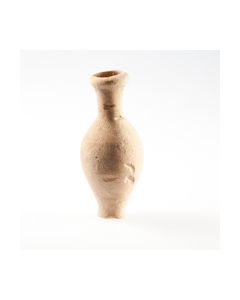 Hellenistisches Tonfläschchen
Hellenistisches TonfläschchenEiförmiger Körper, kurzer Hals mit einer wulstigen Lippe. Kurzer, flacher Standfuß. Museal erhalten.
Price: on request Antiker Fingerring mit Stein
Antiker Fingerring mit SteinMuseales Stück, auch heute noch uneingeschränkt tragbar.3. Jh.n. Chr. Fund aus Region der Limeskastelle Pförring, Eining, Pfünz, Kösching und Weißenburg.
Price: on request Antike Bronzeöse
Antike BronzeöseTeil eines Beschlags oder Möbelstücks. Perfekt erhalten. Schöne Patina. Fund aus Region der Limeskastelle Pförring, Eining, Pfünz, Kösching und Weißenburg.
Price: on request Griechische Trinkschale mit hohem Standfuss
Griechische Trinkschale mit hohem StandfussTiefe, fast halbkugelförmige Schale, knapp über dem Fuß durch Rille eingeschnürt. Innen und Außen mit schwarzen Bändern und Punkten dekoriert. Museal erhalten.
Price: on request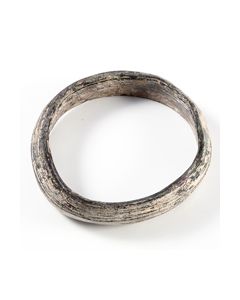 Römischer Glasarmreif
Römischer GlasarmreifAntiker Armreif aus schwarzem bis dunkelblauem Glas, mit Irideszenz. 1. bis 4. Jh. n. Chr., römische Zeit. In Schleudertechnik gefertigt. 70mm Durchmesser.
Price: on request großes hellenistisches Unguentarium
großes hellenistisches UnguentariumWeiß-grauer Ton mit weitgehend erhaltenem grauem Überzug. Museal, schöne Patina. Höhe ca. 120 mm.
Price: on request Unteritalischer Kothon mit Glanzüberzug
Unteritalischer Kothon mit GlanzüberzugDer schwarze Überzug ist glänzend und vollständig erhalten. Museales Stück.
Price: on request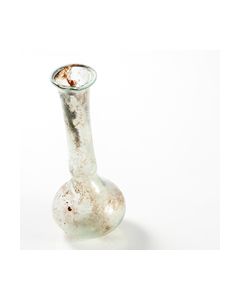 Antikes Glasunguentarium
Antikes GlasunguentariumAntikes Fläschchen aus Glas mit langem Hals. Tolle Irideszenz. Vermutlich für Parfüm oder Öl verwendet. 1. bis 3. Jh. n. Chr.
Price: on request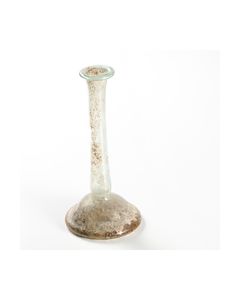 Antikes Glasunguentarium
Antikes GlasunguentariumAntikes Fläschchen aus Glas mit langem Hals. Interessante Gefäßform. Vermutlich für Parfüm oder Öl verwendet. 1. bis 3. Jh. n. Chr.
Price: on request Hellenistisches Unguentarium
Hellenistisches UnguentariumElegantes, fein gearbeitetes spindelförmiges Unguentarium aus Ton. Mit satter Patina. Am Körper Dekorreste.
Price: on request Roman oil lamp showing fighting wrestlers
Roman oil lamp showing fighting wrestlersAn almost identical oil lamp is exhibited in the Roman-Germanic Museum in Cologne
Price: on request Roman jar from Lopodunum
Roman jar from LopodunumPerfectly preserved piece from the 1st - early 2nd century AD. Found in Ladenburg, Baden-Wuerttemberg, Germany.
Price: on request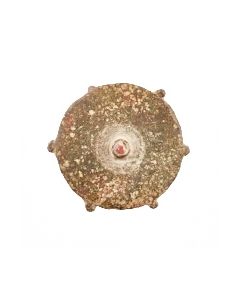 Roman plate brooch found at the Limes
Roman plate brooch found at the LimesAncient brooch with circular plate. Found near the Limes fortifications Pfoerring and Eining in Germany.
Price: on request Rare Apulian terracotta patera
Rare Apulian terracotta pateraFrom an old Swiss collection, btw 1986 and 2001 on loan at the archeologic collection of the University of Zürich.
€695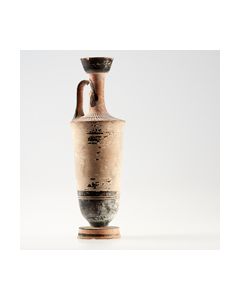 Große zylindrische Lekythos
Große zylindrische LekythosAuf der Schulter in zwei Registern angeordnete Strahlen. Aus deutscher Sammlung, mit weit zurückverfolgbarer Provenienz.
Price: on request Workpiece of a Roman intaglio
Workpiece of a Roman intaglioThis ancient intaglio from Roman times shows a standing figure. The glass paste has a beautiful blue colour.
Price: on request Roman intaglio with Heracles
Roman intaglio with HeraclesThis ancient intaglio from Roman times shows Heracles kneeling. Made from orange glass paste.
Price: on request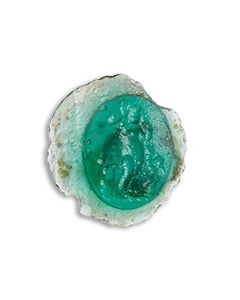 Roman intaglio in beautiful turquoise
Roman intaglio in beautiful turquoiseThe scene shows a standing Aphrodite surrounded by Erotes. Quality glass paste dating to Roman Imperial times.
Price: on request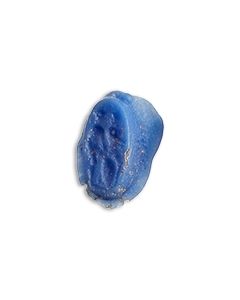 Roman intaglio with two warriors
Roman intaglio with two warriorsExtremely nice sparkling blue glass paste. The scene is similar to a Roman interpretation of the Homeric epics.
Price: on request Roman Intaglio with helmeted bust
Roman Intaglio with helmeted bustNice ancient intaglio made of beautiful greenish yellow glass. The quality work shows the portrait of a young military wearing a Corinthian helmet.
Price: on request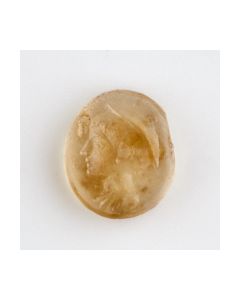 Roman Intaglio with bust of Mercury
Roman Intaglio with bust of MercuryThe glass paste shows Hermes in travel garment. The motive is taken from older Greek gem stones. In Roman culture the god Hermes was known as Mercurius (Mercury).
Price: on request Roman intaglio from rare dichroic glass
Roman intaglio from rare dichroic glassThe lower half of the intaglio is intact and shows a woman in a long dress. Truely special about the piece is the blue reflecting glass that turns violet when light is passing through it.
Price: on request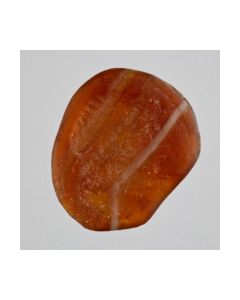 Roman intaglio with greek style bust
Roman intaglio with greek style bustFull beard and curly hair held by a taenia or diadem. The portrait resembles posthumous representations of Philipp II. made by his son Alexander the Great.
Price: on request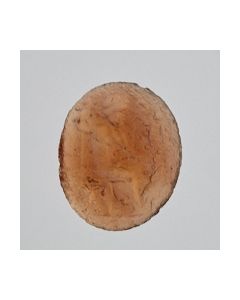 Roman intaglio with Jupiter
Roman intaglio with JupiterThe Roman king of the gods is sitting on a throne, leaning on the sceptre. Victoria is on his right hand crowning Jupiter with a wreath. An eagle is sitting at the feet of the god.
Price: on request Roman intaglio with helmeted bust
Roman intaglio with helmeted bustThe small work of art is made of beautiful turquoise glass. It shows the head of a young soldier with a Corinthian helmet pushed to the back of the head.
Price: on request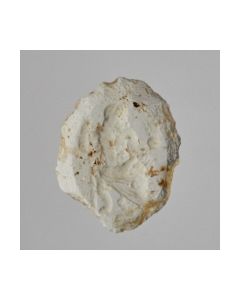 Roman intaglio with Jupiter
Roman intaglio with JupiterThe highest Roman god is sitting on a throne, leaning on the sceptre. Victoria is on his right hand. Clear glass imitating rock crystal.
Price: on request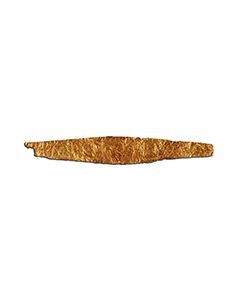 Roman gold diadem with bust of Licinius II
Roman gold diadem with bust of Licinius IIExciting and very well preserved piece.
Price: on request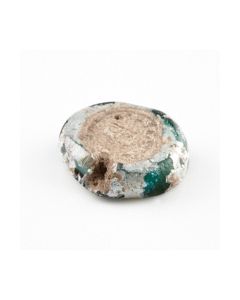 Rare Roman mosaic glass face bead showing Medusa head
Rare Roman mosaic glass face bead showing Medusa headMosaikglasperle aus einer oströmischen Werkstatt des 1. Jh. n. Chr., möglicherweise ägyptisch oder nubischer Import. Das abgebildete Frauengesicht wird gerne als Darstellung der Medusa gedeutet.
€490 Rare Roman mosaic glass face bead showing Medusa head
Rare Roman mosaic glass face bead showing Medusa headMosaikglasperle aus einer oströmischen Werkstatt des 1. Jh. n. Chr., möglicherweise ägyptisch oder nubischer Import. Das abgebildete Frauengesicht wird gerne als Darstellung der Medusa gedeutet.
Price: on request Rechteck-Fibel aus dem 2. bis 3. Jh.
Rechteck-Fibel aus dem 2. bis 3. Jh.Antike römische Brosche. Dekorierte Platte mit Resten von Email. Typ aus dem 2. bis 3. Jh. n. Chr., 20mm x 33mm.
Price: on request Egyptian sarcophagus mask
Egyptian sarcophagus maskImpressive wood relief of an idealized face. Polychrome paint. The mask was part of a sarcophagus lid from the Late Period of Ancient Egypt.
Price: on request Gorgeous Roman Imperial fibula
Gorgeous Roman Imperial fibulaThe large bow is dominated by colourful enamel. It is a brooch type that developed during the 1st cent. AD in Central Europe.
Price: on request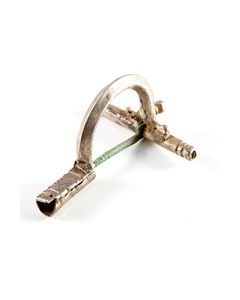 Römische Zwiebelknopf-Fibel aus Silber
Römische Zwiebelknopf-Fibel aus SilberBeliebter Fibeltyp des 3. und 4. Jh. n. Chr. Typischerweise von römischen Männern getragen. Der Träger dieser Fibel aus Silber hatte sicher eine gehobene soziale Stellung.
Price: on request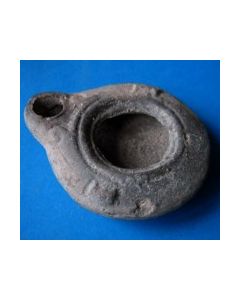 Römische Diskusförmige Öllampe
Römische Diskusförmige Öllampe1. bis 3. Jh. n.Chr., römische Epoche, Provinz Judäa. Hell-orangefarbene Keramik mit fast vollständigem dunklem Überzug. Wichtiger Lampentyp. Länge 71mm, Breite 60mm.
Price: on request Späthellenistisches Unguentarium
Späthellenistisches UnguentariumFein gearbeitetes spindelförmiges Fläschchen aus Ton. Keine Verjüngung zwischen Fuß und Körper. Seltene Variante.
Price: on request

